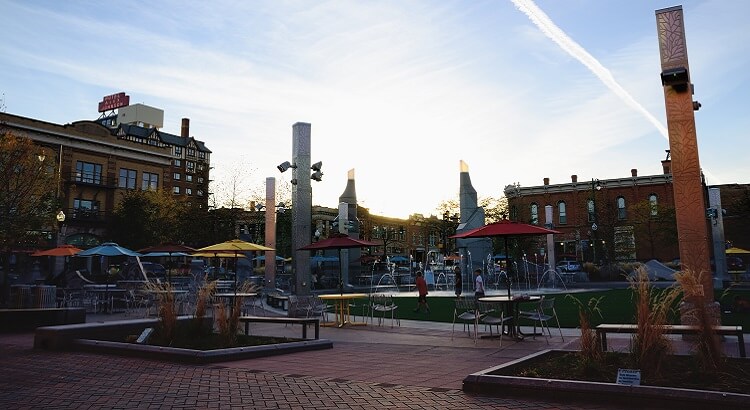
What’s now Main Street Square was a city-center parking lot in late 2009, when the leaders of a downtown economic-development initiative decided this was the place to create a new central plaza for this city by the Black Hills. Just months before, a consultant had urged the city to develop just such a space — and this idea was not going to sit on a shelf.
Main Street Square opened in October 2011, and it has become the jewel of Rapid City. It’s “a center plaza with a waterfall and dancing water fountain, a continually changing visual landscape through public art sculptures, and a downtown gathering area for our local community and its visitors,” says Downtown Rapid City’s website.
Visitors who’ve posted on tripadvisor.com agree. “The place gives that hometown feel to Rapid City,” wrote one. “Good all year round. Ice skating in the winter and concerts and community events all summer long. Public restrooms too.”
Known as the Gateway to Mount Rushmore and the City of Presidents, Rapid City has an array of rich cultural resources often found only in larger cities — playhouses, galleries, a performing arts center, an arts center and a museum. Public sculpture is on display around the city, most notably the life-sized bronze statues of the U.S. presidents that stand on various streets and sidewalks.
Main Street Square is extending this creative tradition with a massive undertaking called The Sculpture Project. Renowned public-art sculptor Masayuki Nagase is using traditional Japanese tools to carve 21 large pieces of ancient granite into an abstract design whose themes are wind, water and the energies of nature and change. The sculptor opens his worksite to visitors on Thursdays from June to October.
The Sculpture Project has inspired other community projects and events at the square — a two-story Badlands mural, an annual Native American art market, an artists-in-schools program and more. Main Street Square is also home to a Thursday night summer concert series and to a rich variety of public events, from a springtime beer tasting and Easter egg hunt through a pumpkin fest and Halloween festival, then a December holiday celebration and winter market.
But you don’t have to wait for a special event. All year long there are shops, a cafe, a pub and eateries to discover and explore, all set around this highly successful new city landmark.
Photo taken by Flickr user jpellgen under CC 2.0 license.
